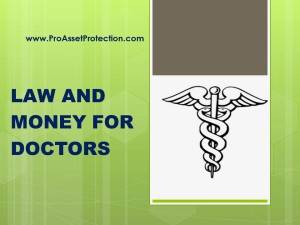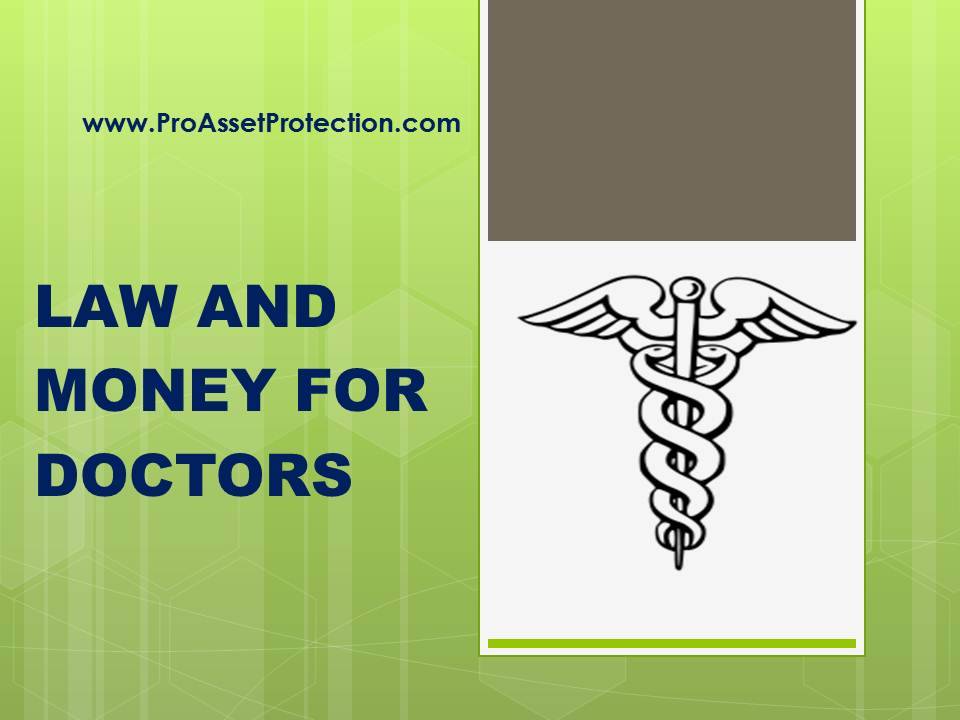 As an asset protection attorney, my primary responsibility has always been helping clients identify and proactively plan against as many litigation-related exposures as possible. That planning now includes a more complete evaluation of financial and economic risks than ever before. Below is one common example that illustrates the challenges many are facing and the importance of proactively addressing and eliminating these threats.
As an asset protection attorney, my primary responsibility has always been helping clients identify and proactively plan against as many litigation-related exposures as possible. That planning now includes a more complete evaluation of financial and economic risks than ever before. Below is one common example that illustrates the challenges many are facing and the importance of proactively addressing and eliminating these threats.
We are seeing more and more physicians’ financial solvency threatened by the level of personal real estate related debt they are holding. Many are overleveraged into their homes and have payments that are now difficult or impossible to sustain due to combinations of financing challenges and income reductions. Many of those in this predicament purchased homes four to six years ago on interest-only loans that now cannot be easily refinanced due to unprecedented declines in the values of their homes.
We discussed the issue of strategic mortgage default in a previous blog post, but for those who do not qualify or who would face substantial personal liability on the loan under their state’s law, the key is to act fast and minimize your exposure by getting out of the house on a short sale or by buying down the loan enough to get the financing required. Due to the great deal of time involved in the average short sale and the issues involved in refinancing, it’s important to be aware of your cash flow and solvency requirements and be a minimum of 120 days ahead of your “crisis” moment, ideally much longer. Remember, just because you decide you are ready to try a short sale does not mean your lender will agree.
One physician client recently walked through her options with me. She wanted to refinance a short-term, interest-only mortgage but needed to make an additional capital contribution of about $100,000 to get the financing she needed. This was unthinkable to the client based on the decrease in value the home had undergone, but turned out to be a good option; here’s why.
She had personal liability exposure under their state’s law of $800,000 if she defaulted. As the family had no current protective planning in place and a clear liability under their state’s law, they would have been both homeless and looking at a solid $800,000 liability plus the costs of legal fees and interest (and the loss of the large down payment and the improvements they had made to the home over the last four years) if they defaulted. Bankruptcy would have cost them nearly an equal amount due to the value of the non-exempt assets they held.
By buying the mortgage down and obtaining manageable financing she and her husband were able to keep the house the family loved, pay the mortgage, and even get a rate several points below what they were currently paying. They were also able to transfer exposed assets (cash) into protected status by moving or converting it into home equity protected by her state’s homestead limits, important given their delicate financial position and a hedge against a future bankruptcy if ever required. Ideal? No, but certainly the lesser of a number of evils for this family.
The same kind of risk-reward analysis easily applies to commercial real estate exposure. Another physician was in a position where the $500,000 loan on their medical building was no longer sustainable. His income had dropped from nearly $500,000 in a peak year to about $150,000. After examining the personal guarantees and potential exposures, selling at $50,000 below what he owed became the clear best option. It reduced his exposure on a personal guarantee by 90+ percent, freed up cash desperately needed in the practice and at home, created a manageable $50,000 short fall he was able to negotiate payments on, and freed him to rent a more affordable space and stay in business.
Again, early treatment and diagnosis are the most vital keys to surviving and minimizing your loss and exposures. Part of the crisis faced by many we have talked to is that they simply waited too long to act. They were used to being successful and having high incomes and had not adequately adjusted their spending and budgets to a sustainable level in time, burning through cash reserves and even savings and protected retirement assets before they acted and when the timing left them the fewest options.
As always, the information presented here is general and educational and can never replace the advice of experienced counsel specific to your assets or situation. This article originally appeared at www.PhysiciansPractice.Com where Ike Devji is a regular contributor, and is reprinted here with permission.


